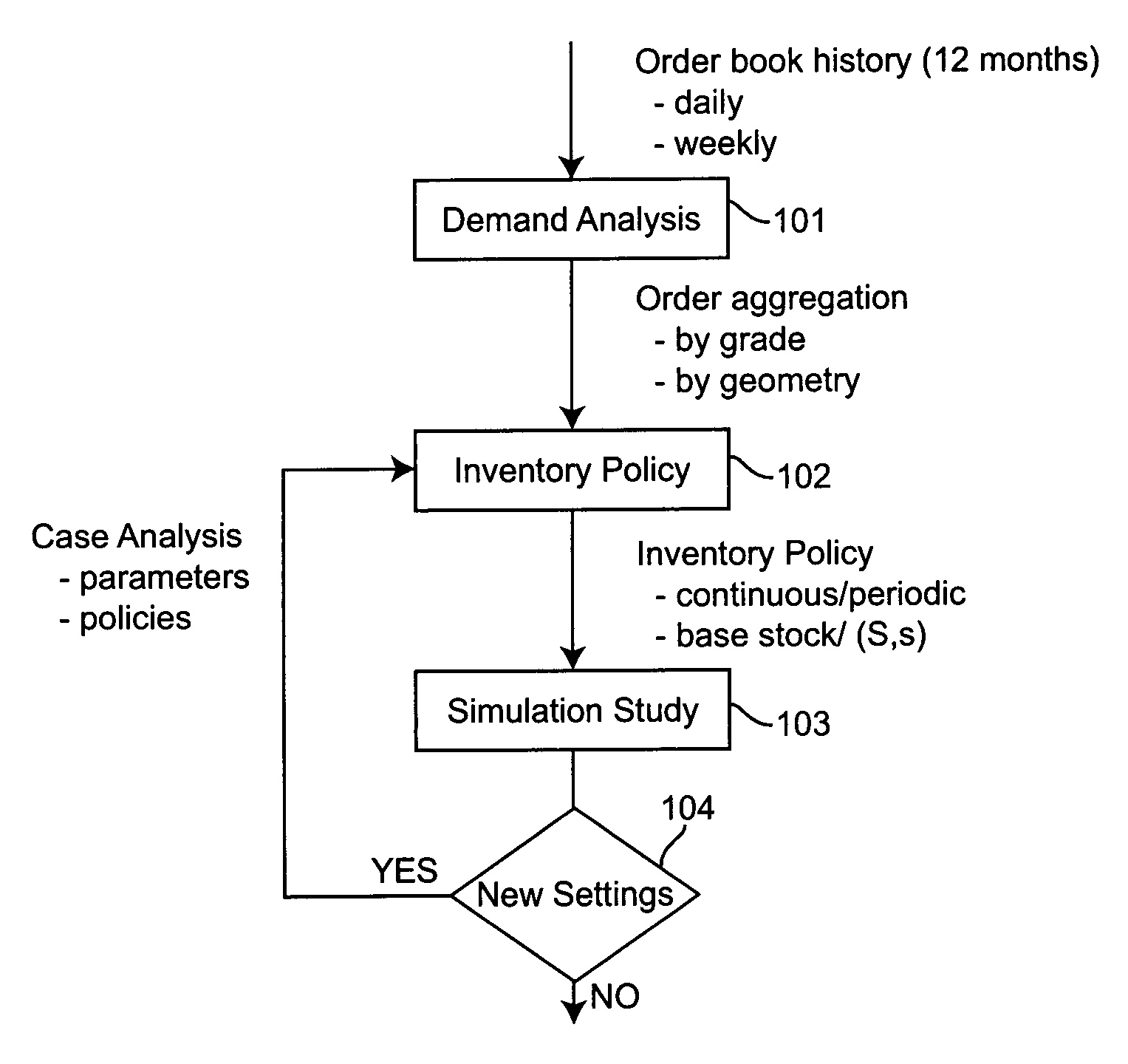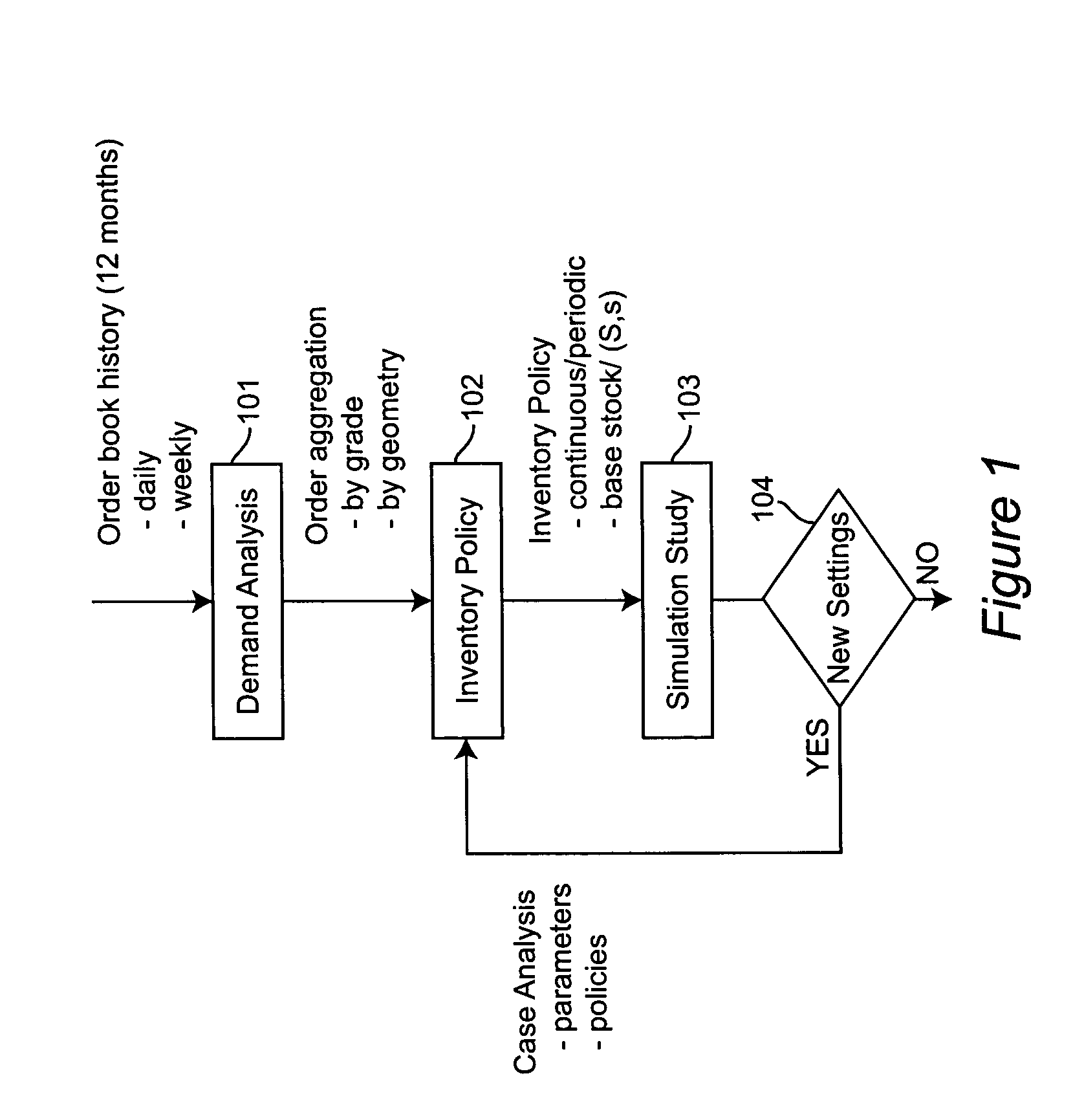Method and system for small-lot orders to optimize production runs in the steel industry
a technology for small-lot orders and optimization of production runs, applied in the field of steel manufacturing, can solve the problems of inefficiency, prior-art solutions to small-lot order problems, and less than completely satisfactory steel industry solutions, and achieve the effect of improving both the serviceability of orders and the productivity of casters
- Summary
- Abstract
- Description
- Claims
- Application Information
AI Technical Summary
Benefits of technology
Problems solved by technology
Method used
Image
Examples
Embodiment Construction
[0043]Referring now to FIG. 1, there is shown a solution framework in which a 12-month order book history is subjected to demand analysis in step 101, producing order aggregation by grade and geometry. An inventory policy is then established in step 102, pursuant to which slab steel stock is reordered when a review of inventory, which may be done on a continuous or a periodic basis, indicates that a reorder point has been reached. A simulation study is performed in step 103 to determine whether inventory parameters and / or policies should be reset, as in step 104. If new settings are appropriate, then the inventory policy is reestablished as in step 102; otherwise, the solution framework process is completed.
[0044]Referring to FIG. 2, there is shown a demand analysis in which orders from various customers arrive in each time interval (such as daily or hourly) and are evaluated in terms of historical data for small lots (such as data covering the last six or 12 months). Based on such ...
PUM
| Property | Measurement | Unit |
|---|---|---|
| weight | aaaaa | aaaaa |
| weight | aaaaa | aaaaa |
| time | aaaaa | aaaaa |
Abstract
Description
Claims
Application Information
 Login to View More
Login to View More - R&D
- Intellectual Property
- Life Sciences
- Materials
- Tech Scout
- Unparalleled Data Quality
- Higher Quality Content
- 60% Fewer Hallucinations
Browse by: Latest US Patents, China's latest patents, Technical Efficacy Thesaurus, Application Domain, Technology Topic, Popular Technical Reports.
© 2025 PatSnap. All rights reserved.Legal|Privacy policy|Modern Slavery Act Transparency Statement|Sitemap|About US| Contact US: help@patsnap.com



